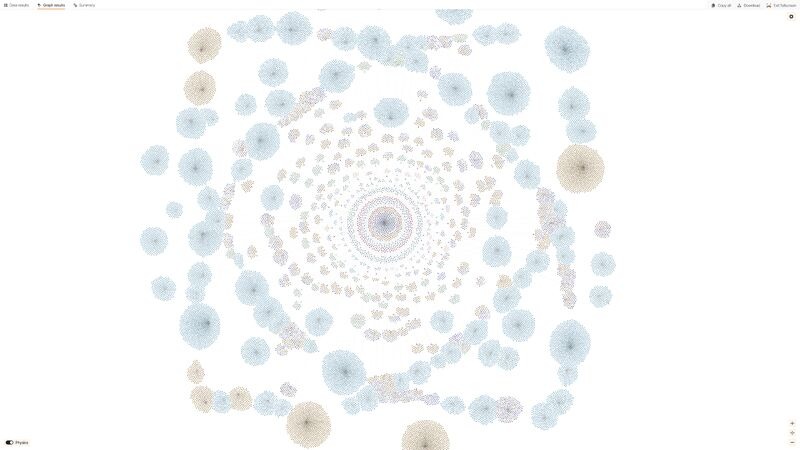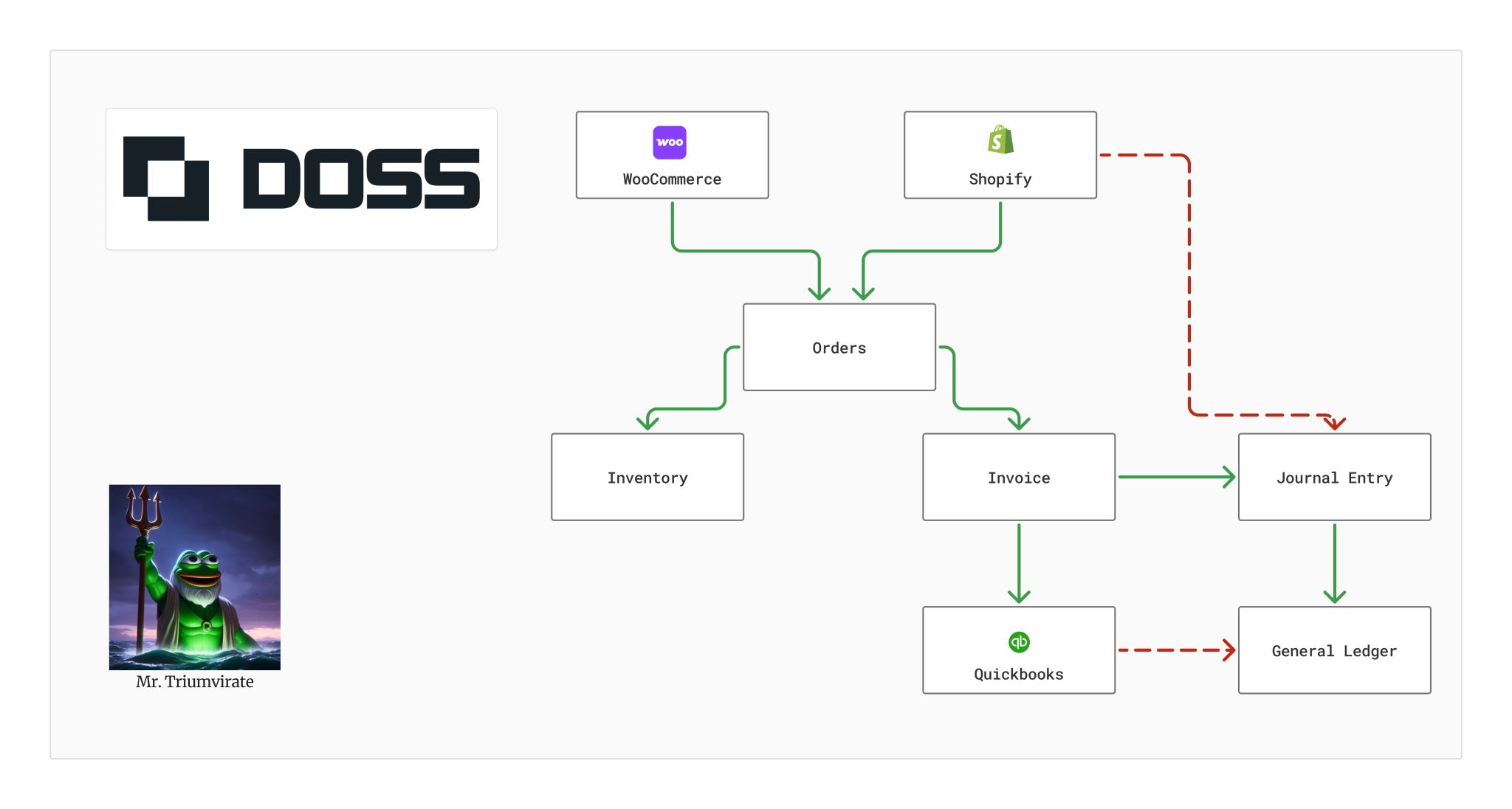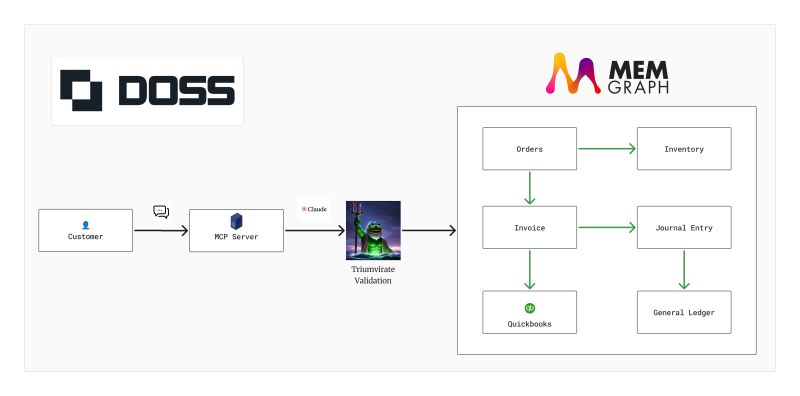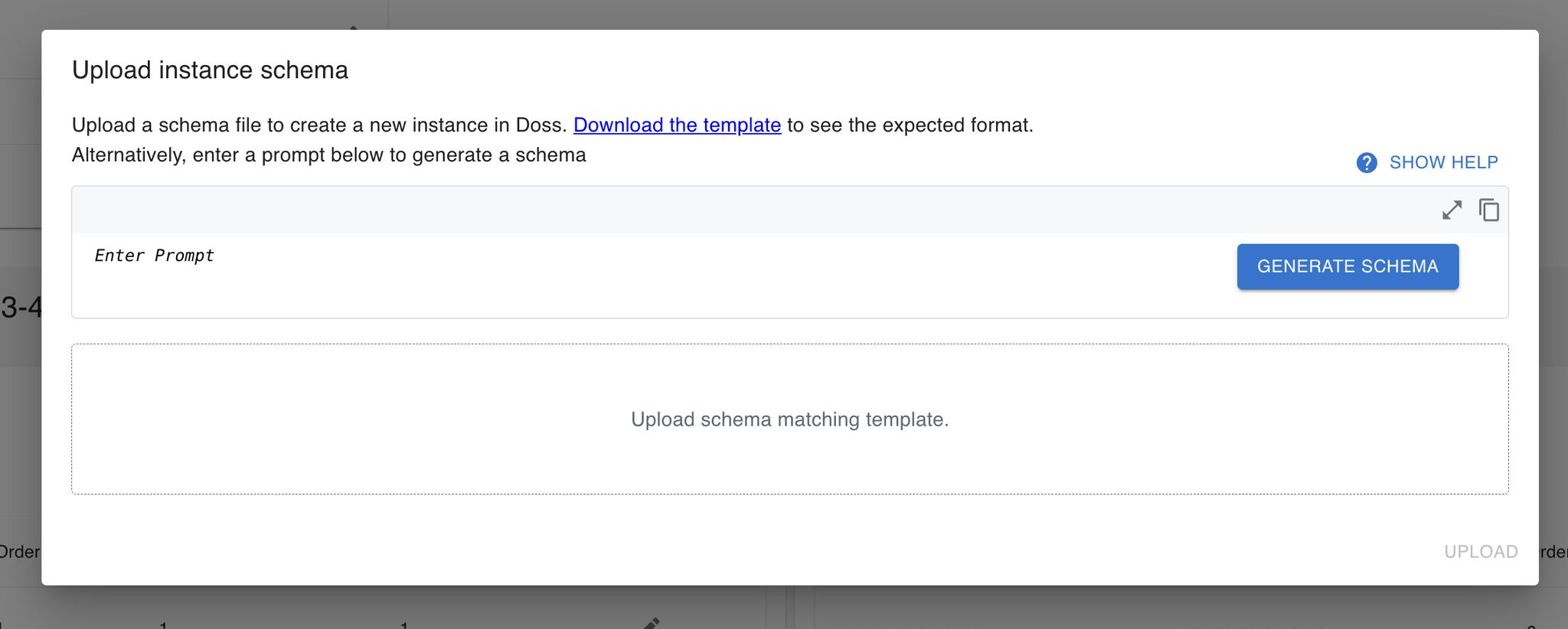In this article
"Beware; for I am [a graph schema], and therefore powerful." - Frankenstein's Monster (sorta)

Enterprise software has a dirty secret: most implementations fail. Oracle and SAP deployments carry failure rates exceeding 50%, cost six to seven figures, and take literal years to complete. Even when they "succeed," customers often end up with systems that work against their business rather than for it.
The root cause isn't complexity, but rigidity. Traditional ERPs force businesses to conform to predetermined schemas, workflows, and data models. When your business doesn't fit the mold (and whose does?), you're looking at expensive customization projects that create technical debt, maintenance nightmares, and vendor lock-in.
At Doss, we took a fundamentally different approach: model the entire system as a graph.
Why a Graph? Because Business Is a Web of Relationships
From day one, Doss was designed around a core insight: every organization operates as a complex web of interrelated processes, data flows, and business logic. Traditional database schemas force these relationships into rigid tables and columns. Graph databases let us model them as they actually exist—as dynamic, interconnected networks.
In our system, nodes represent the foundational elements: tables (system of record), workflows (automations and connective tissue), and forms and integrations (data entry points). Edges capture the relationships between these elements, allowing us to traverse the entire business process map and understand exactly how a customer's organization operates.
This is a technical choice, and a philosophical one. Instead of forcing businesses to fit our predetermined structure, we let their unique operational reality define the system architecture.
The Validation Challenge
Here's where it gets technically interesting. The hardest part about building a composable workflow platform on an abstract model is creation-time validation. Traditional "If This Then That" platforms benefit from structured, predictable schemas. HubSpot workflows know exactly what contact, deal, and company objects look like because those schemas are hardcoded and rarely change.

Doss doesn't have hardcoded Postgres schemas for any entities. There's no predetermined "Invoice" table. Instead, each customer has a configured schema that matches their specific business model. This flexibility is powerful, but it creates a validation problem: how do you ensure data integrity when the schema itself is constantly evolving?
Our answer is the Triumvirate validation engine—a graph-traversal system that connects the three core concepts of our platform:
- Tables: Systems of record
- Inputs: Data entry via forms and integrations
- Workflows: Connective tissue and business logic
On every schema modification, Triumvirate validates the entire graph to ensure all edge relations remain valid throughout the complete data flow. We can traverse data relations and types to prevent invalid connections while generating accurate schemas for third-party integrations, ensuring data validity at every system boundary.
Think of it almost as a compiler for the data relations - like Typescript for Terraform. It verifies the connections of the system for validity to error-proof the build and migration process of the entire system.
MCP and AI-Powered Schema Understanding
The graph model creates another powerful capability: it makes complex business logic legible to AI systems. We've integrated our Memgraph-backed schema with Model Context Protocol (MCP) servers, allowing us to directly query and interact with their data models through natural language.

Previously, understanding the connections between different parts of a customer's instance required deep technical expertise. Software engineers had to manually traverse and query the graph to debug invalid connections or plan schema migrations. When a customer needed to change how they managed inventory—whether through geographic expansion, vertical integration, or fundamental process changes—it required significant engineering intervention.
Now, we can "chat" with the database to understand system interrelations and plan business process modifications while still benefiting from our schema validation guardrails. What used to take days of engineering time can now be accomplished through conversation.
The Future of Enterprise Software Deployment
This brings us to what we call "Vibe Implementations"—the ability for non-technical users to implement sophisticated ERP functionality through intuitive, AI-guided configuration.

The parallel to infrastructure-as-code is intentional. Just as Terraform lets engineers define cloud infrastructure through version-controlled, composable schemas, Doss lets businesses define their operational infrastructure through graph-based, version-controlled business schemas. Every customer installation can be backed up, migrated, and modified through legible configuration files.
But here's where it gets revolutionary: by building an intentionally composable schema and isolating the essential context for AI models to parse, we can achieve 80-100% fidelity on customer buildouts in a single pass through foundation models. The AI works with our Triumvirate validation system—like an automated code reviewer—to iterate and connect additional components to the system.
The Economic Impact of AI-enabled ERP
Traditional ERP implementations take years and cost hundreds of thousands to millions of dollars because they require armies of consultants to manually configure rigid systems for unique business needs. The high failure rate is a feature (not a bug) of the underlying architecture and incentive misalignment represented by services-oriented software installations.
Our graph-native approach changes the economics entirely:
- Implementation time: Days instead of years
- Implementation cost: $0 instead of six-figure consulting fees
- Customization: User-controlled instead of vendor-dependent
- Flexibility: Continuous adaptation instead of painful migrations
When a customer needs to modify their business processes—adding new locations, changing inventory management approaches, or integrating new suppliers—they can make these changes themselves through our AI-powered interface, with validation happening automatically in the background.
Beyond Implementation: Continuous Business Evolution
The real power is in having both faster implementations and enabling continuous business evolution. Traditional ERPs create technical debt with every customization, making future changes progressively more expensive and risky. Graph-based systems with AI-native interfaces make change the default state.
Businesses can experiment with new processes, test different operational approaches, and adapt to market conditions without requiring consulting engagements or system rewrites. The infrastructure adapts to and enhances the business instead of being the primary inhibitor for growth.
What's Next: The Composable Enterprise
We're still in the early stages of what's possible when you combine graph databases, AI-native interfaces, and composable business logic. The current MCP integration is just the beginning—we're exploring how natural language can become the primary interface for business process design and modification.
The vision is a composable enterprise where business logic, data flows, and operational processes can be modified as easily as changing a document. Where adaptation is frictionless, customization doesn't create technical debt, and businesses can evolve at the speed of their market rather than the speed of their software vendor.
Larry Ellison's original vision of integrated enterprise software was correct—he just didn't have the right tools. Graph databases, AI-native interfaces, and composable architectures are finally making that vision possible, without the complexity that killed it the first time.
The future of enterprise software isn't about choosing between flexibility and reliability. It's about having both, with AI as the bridge between human intent and technical implementation. To build a successful business in the 2020s, every business will need a system like Doss.

